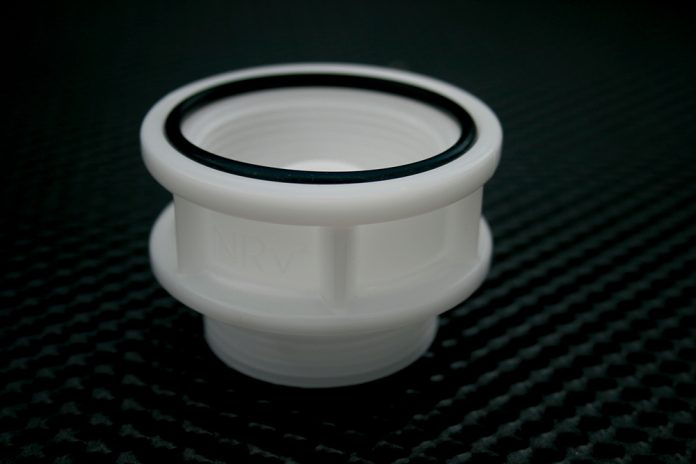With increasing pressure on water supply, can marginal gains move water supply closer to net zero?
As our climate changes, our population increases and our lifestyles become more leisure orientated, there is an ever-increasing demand for water. This has been exacerbated by the increase in demand generated by home workers, something we expect to see becoming part of the normal working week.
Can we improve water efficiency and reduce per capital consumption?
In the UK, our water services are cheap. For just a few pounds, domestic customers can have a tonne of high-quality drinking water delivered to their taps, then taken away and cleaned up. Although the financial cost of supplying and cleaning water is relatively low, the environmental impact isn’t – 40gm of carbon for each 1m3, whether that’s making it ready for consumption or to return it to the environment.
‘Smart metering’ and public awareness campaigns can have some impact on domestic consumption. However, aging infrastructure with multi household supplies are amongst the many factors that ensure that mandated metering – let alone ‘smart metering’ is not likely to be rolled out nationally in the short term. In addition, our attitude to water on this green, rain-soaked land means behaviour change is unlikely reduce the average personal daily consumption of 143 ltr to 110 ltr by 2050, a target set by Defra in March 20201.
Can ‘marginal gains’ get us on track?
Our water companies are regulated to provide a minimum level of water, but in many areas due to network structure and gravity fed systems supply is much greater. So run a hose for five minutes at the bottom of the hill, and your lawn will be greener that the gardener that does the same at the top. These ‘time controlled’ uses, e.g. teeth cleaning could be standardised down if all households received the same acceptable, ‘minimum’ supply. Our target is a 23% reduction, so even 7 ltr a day would achieve over a fifth of that target.
So , how can Groundbreaker Systems help?
Groundbreaker’s NRv2 Check Valve system can help modulate the level of flow entering customer premises – regardless of network pressure, meaning a reduction in the level of water used by customers when ‘variable use’ appliances (i.e. showers, taps, hosepipes) are used. As the flow of water into the premises is limited, then the amount used by the customer is also limited – but without providing a degradation of service, and more importantly not requiring any intervention or behavioural change on the part of the customer, leading to ‘natural’ reduction in per capital consumption.
A number of flow modulation ranges are available which enable the perfect balance between usage reduction and service provision. As an added benefit, the NRv2 Check Valve system can also provide whole site protection against contamination by back flow.
The NRv2 can be easily and simply retrofitted to any meter installation, or meter exchange when upgrading or remediating underground meter chambers. Thus, allowing Water Companies to manage demand with little or no impact on consumers and at minimal cost to the water undertakers – effectively a 3 in 1 solution.
A simple solution at approximately £20 per household, fitted on the normal meter exchange/upgrade cycle could achieve 20% of our consumption target in 10 years.
Groundbreaker products are compliant with all Regulations and defined criteria and are used extensively across the whole of the UK water supply network – whether that be North of Scotland or the Channel Islands.
Facts:
A reduction of 47% in summer rainfall is anticipated in the next 50 years.2
House building is set to accelerate, with new home targets currently at 300,000 per annum. With this increase, supply cannot be adjusted to meet demand.
Water Companies are required by Law3 to provide a supply capable of delivering minimum 10 litres/minute at 1bar pressure to a domestic dwelling (Water Industry Act). Many water distribution networks allow for consumers to take flow rates well in excess of this – NRv2 will allow the volumes of water taken into premises to be better controlled.4
Control of supply can NRv2 alleviate problems caused by high water pressures on individual water services, significantly reducing the risk of bursts on private pipes (BOPP’s)
Based on 140 ltr per person daily usage,
a 2% reduction would result in a 66.4 million m3 water saving equating to approximately 20 million tonnes CO2.
Steve Leigh FIWater, Managing Director
Richard Leigh B.Eng., C.Eng., MICE, Business Development Manager
Groundbreaker Systems won the HBF’s ‘Utility of the Year’ in 2018.
www.groundbreaker.co.uk
1 https://assets.publishing.service.gov.uk/government/uploads/system/uploads/attachment_data/file/873100/National_Framework_for_water_resources_summary.pdf
2 https://www.metoffice.gov.uk/about-us/press-office/news/weather-and-climate/2018/ukcp18-launch-pr
3 From May 2018 a WRAS Approved (or Regulation 4 approval) for a check valve must include tests for bending, closure or verification (if two applied in series) and be appropriately marked as compliant for back flow protection or otherwise in the Water Fittings Material Directory.
4 From May 2018 a WRAS Approved (or Regulation 4 approval) for a check valve must include tests for bending, closure or verification (if two applied in series) and be appropriately marked as compliant for back flow protection or otherwise in the Water Fittings Material Directory.



